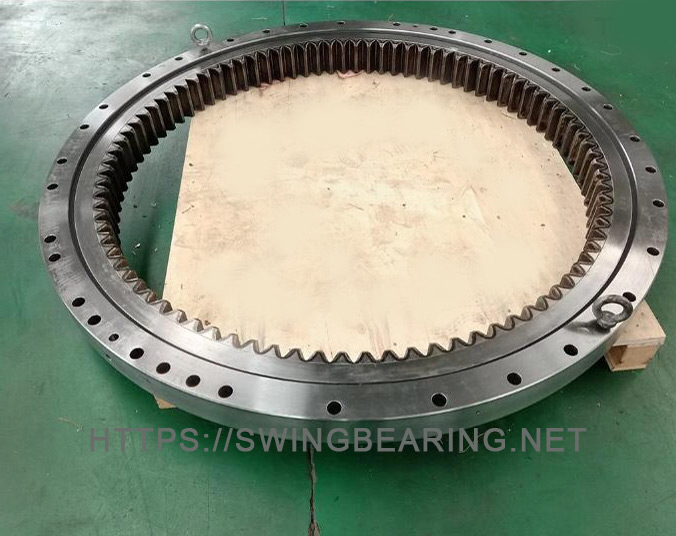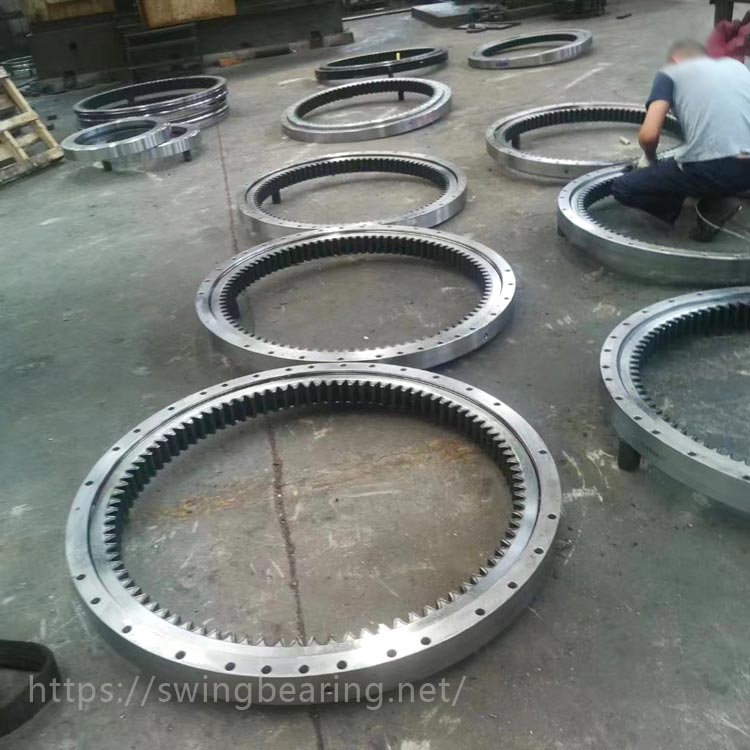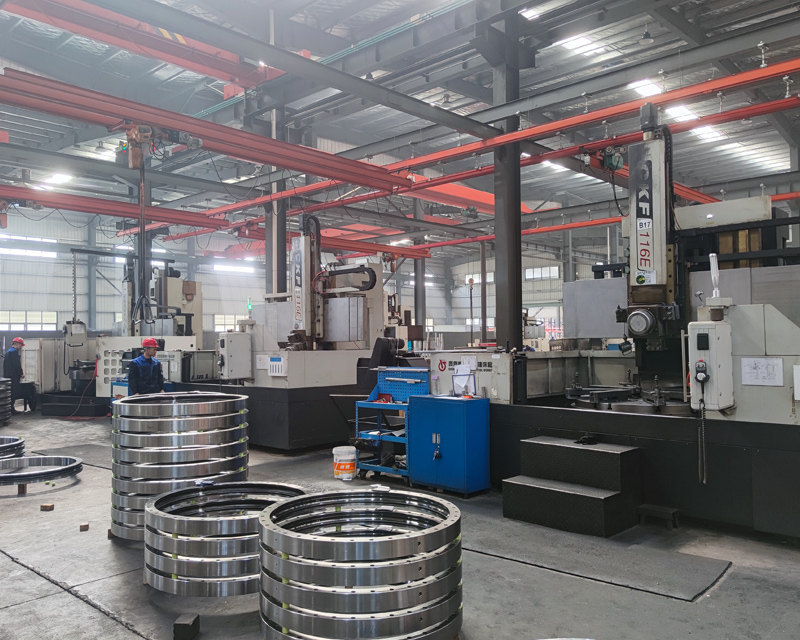
Excavators are indispensable in construction and heavy industry due to their versatility and power. The undercarriage system, which supports the weight and movement of the machine, is crucial for an excavator’s functionality. Within this system, wheel bearings play a pivotal role by facilitating smooth rotation and bearing the heavy loads exerted by the machine during operation. Understanding the types, maintenance requirements, and replacement procedures of excavator wheel bearings is essential for maintaining operational efficiency and prolonging the lifespan of the machinery. This comprehensive guide explores these aspects in detail, emphasizing the importance of regular upkeep and safe handling practices.
Excavator wheel bearings come in several types, each designed to meet specific operational needs. The most common types include tapered roller bearings, ball bearings, and cylindrical roller bearings. The selection of bearing type is often dictated by the design and performance requirements of the particular excavator model.

Tapered roller bearings are designed to handle both radial and axial loads, making them ideal for heavy-duty applications. These bearings feature an inner and outer ring with tapered rollers positioned between them. The tapered shape allows for the even distribution of loads, reducing the risk of bearing failure under heavy stress. This type of bearing is particularly suited for excavators operating in demanding environments where they frequently encounter uneven terrain and heavy lifting.
Ball bearings are widely used due to their simplicity and ability to handle both radial and axial loads. They consist of spherical balls housed within an inner and outer ring. Ball bearings are typically used in applications requiring lower load capacities and higher speeds. In excavators, they are often found in components where precise movement and alignment are crucial, such as the swivel joint and track rollers.
Cylindrical roller bearings are designed to support high radial loads and moderate axial loads. They feature cylindrical rollers that provide a larger contact area with the raceways, resulting in greater load-bearing capacity and reduced friction. These bearings are ideal for excavators that operate under heavy radial loads, such as those encountered during digging and lifting operations.
Proper maintenance of excavator wheel bearings is crucial to ensure their longevity and prevent premature wear or failure. Regular maintenance involves several key activities, including cleaning, lubrication, and inspection.
Cleaning wheel bearings is essential to remove dirt, debris, and contaminants that can cause abrasive wear and corrosion. This process typically involves disassembling the wheel assembly to access the bearings, using solvents or specialized cleaning agents to remove contaminants, and then thoroughly drying the components before reassembly.
Lubrication is vital for reducing friction and preventing metal-to-metal contact between the bearing components. Regular lubrication helps dissipate heat generated during operation, reducing the risk of overheating and extending the bearing’s service life. The type of lubricant used should be compatible with the bearing material and operating conditions. Common lubricants include grease and oil, each with specific properties suited to different applications.

Routine inspections are necessary to identify signs of wear or damage before they lead to bearing failure. During inspections, technicians should look for indicators such as unusual noises, excessive play, uneven wear patterns, and signs of corrosion. Using tools like dial indicators and micrometers can help measure wear and detect misalignment.
When a wheel bearing becomes worn or damaged, timely replacement is essential to avoid further damage to the undercarriage system and ensure safe operation. The replacement process involves several steps:
To replace a wheel bearing, the wheel and hub assembly must first be removed. This process typically involves lifting the excavator to relieve pressure on the wheel, removing the lug nuts or bolts, and carefully detaching the wheel assembly.
Once the wheel assembly is removed, the old bearing must be pressed out of the hub. This step requires specialized tools, such as a hydraulic press, to safely and efficiently remove the bearing without damaging the hub or other components.
After the old bearing is removed, the new bearing can be installed. The new bearing should be carefully pressed into the hub, ensuring it is properly seated and aligned. Lubrication should be applied as necessary during installation to facilitate smooth operation.
Finally, the wheel and hub assembly is reattached to the excavator, and all bolts and nuts are securely tightened. The excavator should be lowered carefully, and a final inspection should be conducted to ensure everything is properly installed and functioning.
The cost of replacing an excavator wheel bearing can vary widely depending on several factors, including the type of bearing, the specific make and model of the excavator, and the extent of the repair needed.
The cost of the bearing itself can range from a few hundred dollars to over a thousand dollars, depending on its type and specifications. High-quality bearings designed for heavy-duty applications tend to be more expensive due to their durability and load-bearing capacity.
Labor costs for replacing a wheel bearing can also vary. Skilled technicians with experience in excavator maintenance typically charge higher rates. Additionally, the complexity of the replacement process and the time required can impact the overall cost. Labor costs can range from a few hundred dollars to over a thousand dollars.
Working on excavator wheel bearings involves significant safety risks due to the heavy machinery and the pressure exerted on the bearings. It is crucial to follow proper safety procedures to prevent accidents and injuries.
Using the correct tools is essential for safely removing and installing wheel bearings. Hydraulic presses, bearing pullers, and torque wrenches are some of the specialized tools that may be required. Improvising with incorrect tools can lead to accidents and damage to the components.
Wearing appropriate protective gear, such as gloves, safety glasses, and steel-toed boots, is vital when working on excavator wheel bearings. These items help protect against injuries from sharp edges, flying debris, and heavy components.
Properly lifting and supporting the excavator is crucial to ensure stability and safety during maintenance. Using jack stands or other support mechanisms can prevent the excavator from tipping or collapsing, reducing the risk of injury.

Excavator wheel bearings are critical components that require regular maintenance and timely replacement to ensure the machine’s optimal performance and longevity. Understanding the types of bearings, their maintenance needs, replacement procedures, and associated costs can help operators and technicians keep their excavators in top condition. Adhering to safety precautions is essential to prevent accidents and injuries during maintenance. By following these guidelines, operators can maintain their excavators efficiently and safely, ensuring reliable operation in demanding environments.
A1: Signs of a failing wheel bearing include unusual noises (such as grinding or clicking), excessive play or wobbling in the wheel, uneven tire wear, and increased vibration during operation. Regular inspections can help detect these issues early.
A2: The frequency of lubrication depends on the manufacturer’s recommendations and operating conditions. Generally, wheel bearings should be lubricated every 250 to 500 operating hours, but more frequent lubrication may be necessary in harsh or dusty environments.
A3: While it is possible to replace a wheel bearing yourself if you have the necessary skills and tools, it is generally recommended to hire a professional technician. Professional technicians have the expertise and equipment to perform the replacement safely and efficiently.
A4: The type of lubricant depends on the bearing type and operating conditions. High-quality grease or oil specifically designed for heavy-duty applications is typically recommended. Always refer to the manufacturer’s guidelines for the appropriate lubricant.
A5: Regular maintenance, including cleaning, lubrication, and inspection, is essential for extending the lifespan of wheel bearings. Using high-quality fuel and lubricants, avoiding overloading, and operating the excavator within its recommended parameters can also help reduce wear and tear.